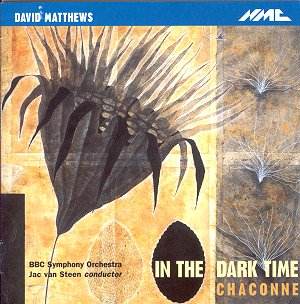 Composer: Franz Liszt, Jean Sibelius, Peter Tchaikovsky
Composer: Franz Liszt, Jean Sibelius, Peter Tchaikovsky
Works: Les Préludes (Symphonic Poem No. 3), The Swan of Tuonela, The Sleeping Beauty
Performers: Leopold Stokowski and his Symphony Orchestra
Recording: December 1947
Label: RCA
Leopold Stokowski, a conductor renowned for his vibrant interpretations and innovative orchestral textures, brings together a compelling program of orchestral masterworks in this 1947 recording. The selected pieces—Liszt’s “Les Préludes,” Sibelius’s “The Swan of Tuonela,” and Tchaikovsky’s “The Sleeping Beauty”—demonstrate Stokowski’s penchant for lush sonorities and dramatic expression, hallmarks of his illustrious career, particularly following his tenure with the Philadelphia Orchestra. This recording, emerging from an era rich with orchestral experimentation, showcases Stokowski’s unique interpretative insights during a period of transition in his career.
Stokowski’s interpretation of “Les Préludes” stands out for its kinetic energy and fiery tempos. The conductor’s approach to Liszt is characterized by sweeping phrases and a clear delineation of thematic material, emphasizing the work’s narrative arc. The brass section, bolstered by the prominent presence of horns and trumpets, delivers a powerful resonance that complements the orchestral fabric. Stokowski’s choice to maintain a brisk tempo in the opening section reveals an urgency that is both invigorating and aligns with Liszt’s Romantic ethos. However, the interpretation could be seen as slightly lacking in the more nuanced, introspective moments that Liszt often demands, leaving some passages feeling less fully realized than in other notable recordings, such as those conducted by Herbert von Karajan or Leonard Bernstein.
In the performance of Sibelius’s “The Swan of Tuonela,” the cor anglais, masterfully played by Mitchell Miller, takes center stage, weaving a hauntingly beautiful line that captures the essence of the work. Stokowski’s lush orchestration allows the strings to shimmer delicately, emphasizing their capacity for expressivity. The nuanced string tone, particularly in the violins and violas, is rendered with a warmth that enhances the ethereal quality of the piece. While this rendition is commendable, it does not surpass Stokowski’s previous recordings, which offered more depth and contrast, particularly his 1952 version with the London Symphony Orchestra, which possesses a more profound emotional resonance and fluidity.
Tchaikovsky’s “The Sleeping Beauty,” although heavily edited to fit the constraints of the recording medium, is delivered with considerable charm. The orchestral colors are vibrant, and the string section’s rich, nuanced tone is particularly striking, showcasing the ensemble’s technical prowess. Stokowski’s modifications, while perhaps sacrilegious to purists, result in a performance that retains the enchanting spirit of the ballet. The engineering of this recording deserves mention, as the sound is remarkably forward, allowing the vibrant orchestral textures to emerge with clarity and depth. This refurbishment has successfully revitalized a historical recording, ensuring that its sonic qualities resonate with contemporary listeners.
The overall assessment of this collection reveals Stokowski’s mastery as a conductor capable of extracting a wide palette of emotions from his orchestra, even amidst the limitations of recording technology in the late 1940s. While some interpretations may not fully eclipse the conductor’s own earlier renditions or those by his contemporaries, they stand as a testament to his innovative spirit and the unbridled energy he infused into the orchestral repertoire. This recording is an important document of Stokowski’s artistry and remains an engaging listen for both ardent fans and those discovering the conductor’s legacy for the first time.



